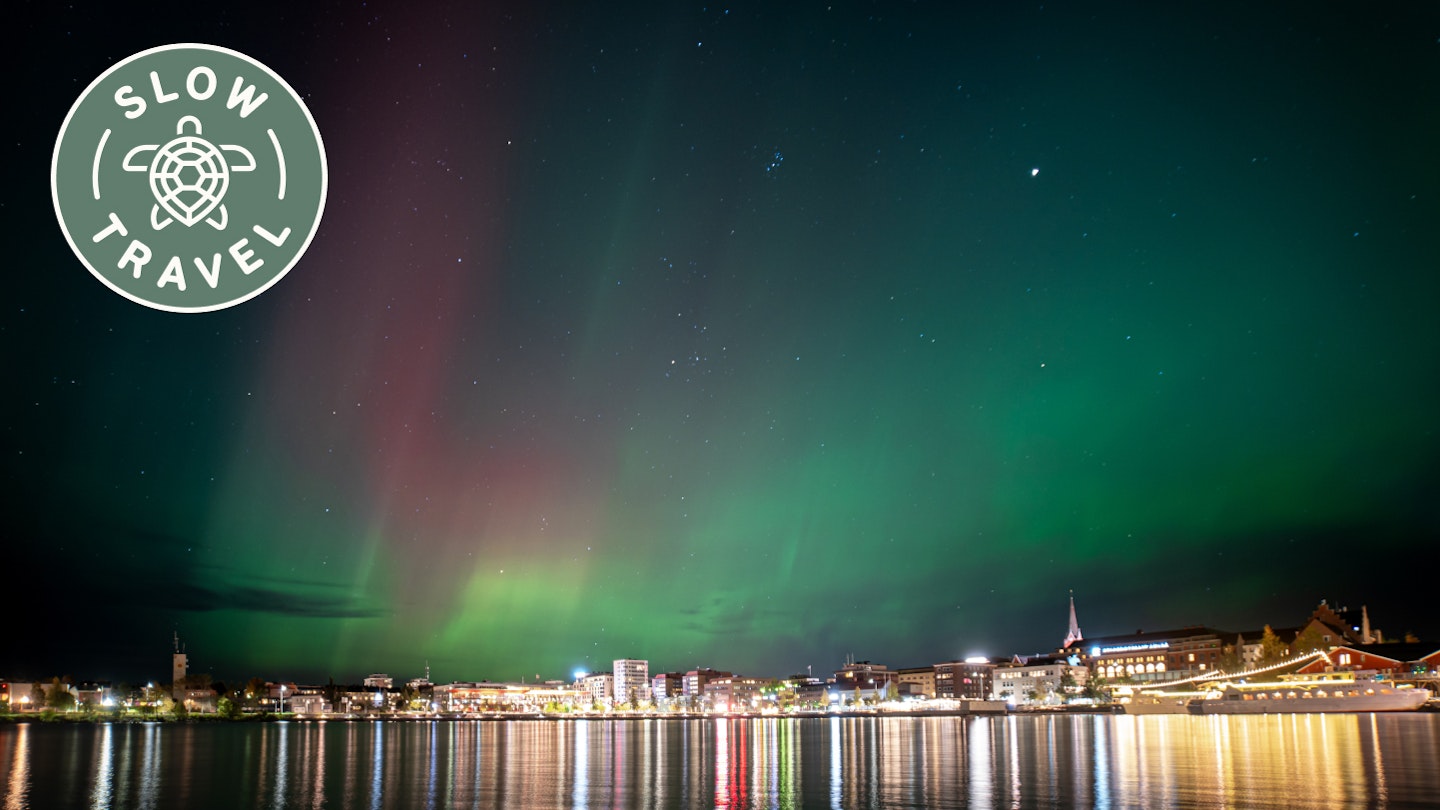Journey Through the Arctic Circle with GoTravelDaily
Our slow travel series explores how you can take more mindful journeys by train, boat, bus, or bike – with tips on how to reach your destination without flying, and what to see and do along the way. Here, Daniel James Clarke explains how he traveled from Lapland to the Lofoten Islands, crossing the Arctic Circle aboard two of Scandinavia’s most scenic train journeys.
Swedish Lapland to Norway: the Luleå to Narvik Train
For centuries, Norway’s majestic Lofoten Islands have enticed travelers to cross the Arctic Circle in pursuit of pristine panoramas and stunning aurora borealis sightings.
I was already exhausted as I reached Luleå train station for the early morning departure to Norway, having seen the aurora borealis the night before. I had skipped sleep to bear witness to this surreal spectacle.
Luckily, the train seats were comfortable in the carriage, a semi-enclosed space with some seats against the window. As our seven-and-a-half hour, 473km (293 miles) journey began, we soon stalled at Boden station to attach additional carriages from the overnight service from Stockholm.
The first couple of hours passed slowly until we crossed the Arctic Circle line at minuscule Murjek station. Soon after, the breathtaking panoramas appeared near Gällivare. Ridges flanked the tracks, surrounded by dense pine forest and lakes.
As we rolled into Kiruna, known for its vast underground iron ore mines, we pulled up alongside wagons used to shuttle mineral-rich deposits to Luleå’s port. The Malmbanan (Iron Ore Line) was originally constructed to facilitate this transport.
After a brief stop, we continued our journey. Abisko National Park was cinematic, framed by autumnal hues, guiding our view towards the vast Torneträsk lake, reflecting the snow-capped mountains.
The train guard announced our descent to Rombaken fjord, revealing steep slopes and the deep blue waters below. Soon enough, we arrived in Narvik, just behind schedule.
Slowing Down: The Lofoten Islands by Bus
Having arrived in Narvik, I opted for the direct bus to Leknes instead of backtracking to Skutvik for the ferry. My journey allowed me to relish the views of Lofoten’s cloud-shrouded peaks as they rose dramatically from the Norwegian Sea.
Daily bus schedules make it easy to traverse the Lofoten Islands, even during off-season. My unlimited bus pass facilitated seamless travel to various attractions, remote villages, and stunning beaches.
Meanwhile, Reine’s traditional, turf-roofed cabins were even more charming than I expected, and the beaches, like Haukland Beach, offered Caribbean-like beauty with crystalline waters.
I felt far more present traveling slowly, savoring each moment instead of rushing towards the next destination.
A Free Ferry Back to Bodø
Å, a quaint village, served as my strategic endpoint, allowing for a connection to the early morning Moskenes–Bodø ferry. The seamless transfer was a breeze, and I enjoyed the ferry crossing while admiring the fading islands behind me.
Once I arrived in Bodø, I took the opportunity to explore this bustling port town, which holds the title of one of the EU Capitals of Culture 2024.
Back Across the Arctic Circle: Bodø to Trondheim by Train
The next day, I boarded the Nordlandsbanen train to Trondheim, known as Norway’s longest rail line. The scenic ride along Skjerstad Fjord showcased occasional ruby-red cabins amidst stunning landscapes.
Our journey included various landscapes, tunnels, and a breathtaking view of knotted ice-capped peaks as we ascended the Saltfjellet mountain range. A highlight was crossing the Arctic Circle, marked by cairn-like structures.
We passed through lush greenery, and with every passing hour, the scenery transformed, with riverbanks shimmering under daylight. After nearly 10 hours, arriving at Trondheim was a relief.
Onwards to Oslo
Although I had planned to go directly to Oslo, I chose to spend a night in Trondheim, allowing me time to explore its historical highlights, including the Gothic Nidaros Cathedral and the Kristiansten Fortress.
Later that night, I boarded the Vy bus to Oslo, pleasantly surprised by the comfort. After traveling over 2000km (1243 miles) in nine days, I finally drifted into a deep sleep, dreaming of the enchanting auroras.
How to Make it Happen
Travel Arrangements
Planning your Arctic Circle journey requires some foresight. I booked my train tickets in advance to secure better prices. For local bus travel in Lofoten, consider obtaining the Travel Pass Nordland for unlimited travel, allowing for easy exploration.
Food and Drink Options
Onboard services offer various meal options and refreshments. Hot meals and snacks are accessible on the trains, but bringing along your own picnic is cost-effective for those seeking budget-friendly alternatives.
Facilities
The trains are equipped with charging sockets and Wi-Fi, ensuring a connected journey. Most bus services are similarly equipped, making digital navigation straightforward.
Plan Your Visit by Season
Keep in mind that experiences vary by season; for instance, summer offers prolonged daylight, and winter may provide opportunities to view northern lights. Checking local schedules for ferries and bus services in advance is advisable.





